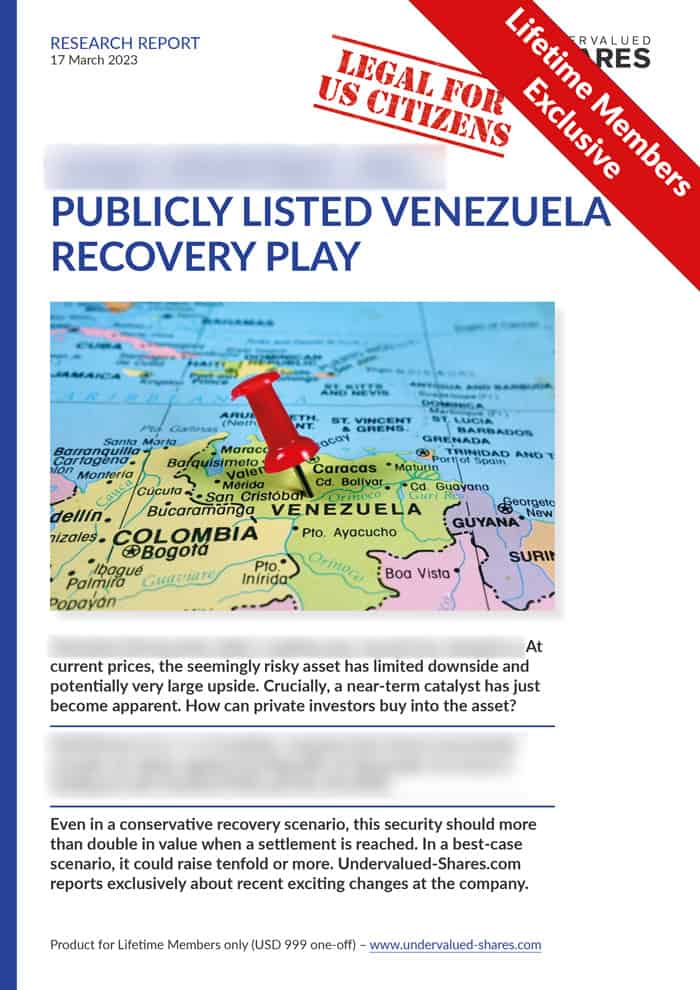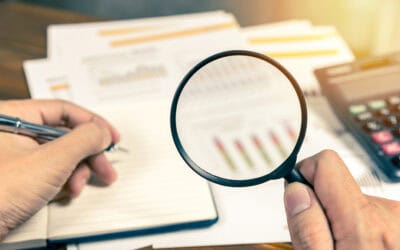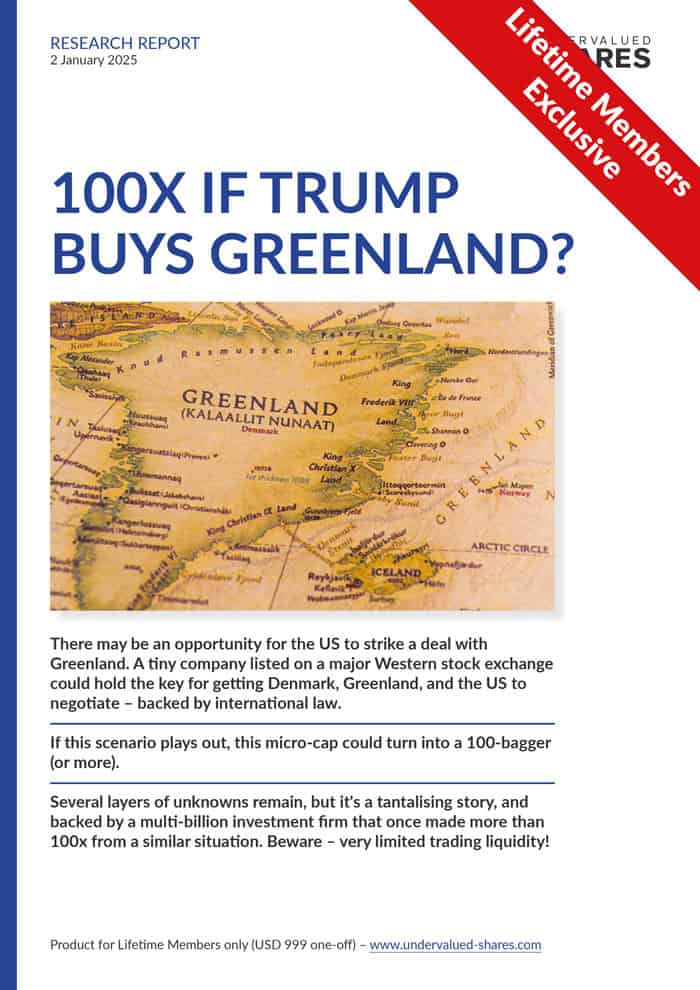On 18 April 2023, Europe's first-ever auction of a T. rex skeleton will take place in Zurich. The bidding will likely yield a new record price, and there'll probably be an unprecedented media circus both before and after the auction.
It will be just the latest sign of dinosaur skeletons being in demand like never before.
Given global inflationary tendencies, investors are looking for hard assets to protect their capital – and ideally, achieve capital growth, too.
Are dinosaur bones a rare case of a collectible asset that is still comparatively cheap?
Are we about to witness dinosaur skeletons becoming an actual new asset class?
Undervalued-Shares.com put on its Indiana Jones hat and set out to investigate.
Rare, fascinating, and universally loved
Collecting dinosaur skeletons isn't a new phenomenon, and it's always attracted attention from the rich and famous.
In the late 19th century, wealthy Wall Street financiers like Jean P. Morgan and John D. Rockefeller funded professional expeditions to unearth dinosaur fossils.
More recently – during the 2010s – Hollywood actors like Nicolas Cage and Leonardo DiCaprio publicly bid on dinosaur bones, which gave the sector a huge boost in visibility.
Asian collectors, in particular, started spending record sums on the most desirable artefacts. With rhino horns and ivory increasingly frowned upon even in Asia, showing off a dinosaur skeleton in your living room became the ultimate must-have item for crazy rich Asians.
The coronavirus pandemic gave the sector another boost, if only for the more down-to-earth part of the market. Fossil hunting is something that happens outdoors, which at a time when outdoor pursuits were the only permitted activity attracted a growing number of people. Websites such as Fossils-UK now offer organised fossil hunting trips.
All of this conspired to growing demand for fossils, skeletons and similar collectibles across all income groups. Rich or poor, young or old – who doesn't like a dino?
The sector is marked by both an incredible abundance and an extraordinary rarity.
On the one hand, finding fossils is as easy as walking the beaches of fossil hotspots such as Britain's Jurassic coast.
On the other hand, truly world-class fossils are extremely rare. Of the Tyrannosaurus rex, just 74 good specimens have been discovered, and only 15 have made it into private hands.
In the UK, London's Natural History Museum is widely associated with skeletons and fossils, and it's the country's most visited museum. "Dippy the Dinosaur" – one of the dinosaur skeletons discovered during the age of early Wall Street titans funding exhibitions – was its most successful exhibition in 2022, attracting over a million visitors.
Speak of an asset that is scarce but which also generates universal fascination and adoration.
As yet, dinosaur bones are mostly a collector's item and less established as a financial investment. It's a tiny, untransparent sector and difficult to get access to.
Given that the finance industry always hunts for the next new product to put in front of investors, are dinosaur skeletons next in line?
They probably are, but it'll come with quite a degree of controversy.
Science vs commerce
When "TRX-293 TRINITY" goes up for auction in Zurich on 18 April 2023, it'll probably trigger another media storm.
With an estimated price tag of USD 5.4-8.4m, this dinosaur skeleton will be unaffordable for public institutions, making a private collector the likely winner of the auction.
There is always criticism from museums and academia when private buyers pick up ultra-rare, iconic dinosaur skeletons as allegedly, these artefacts will be kept hidden from the public and unavailable to science.
While this argument makes sense on the surface, in my view, it doesn't withstand closer scrutiny. There is probably an enormous number of dinosaur skeletons and other fossils waiting to be discovered, and it's been museums and academia that have proven incapable of mobilising sufficient resources to unearth more of them – or else, why are they so rare?
When I worked as CEO of a scientific organisation from 2010-2014, I witnessed not just how inept scientists go about funding their work, but also how many museums keep many of their treasures hidden from the public eye. I thus don't buy into the do-gooder arguments.
Fossil hunting is a sector that seems both ripe for and in need of a bit of disruption. It's too important a sector to leave it purely in the hands of museums and academia, two sectors that have proven insufficiently capable of modernising and scaling up.
Relative affordability
Obviously, there is no index for dinosaur fossils and probably never will be. The sector has no market prices per se, which makes it difficult to assess its investment potential.
Prices HAVE already risen, and quite substantially so. It appears the starting gun for dinosaur bones to become a lot more valuable was fired in 1997, when a T. rex skeleton called "Sue" fetched an unexpectedly high USD 8.4m at an auction. Until then, few skeletons had fetched more than USD 200,000. In today's dollars, the price would be equivalent to about USD 15m. In comparison, the iconic T. rex skeleton, "Stan", was auctioned for USD 31.8m in 2020. There is an upward trajectory visible.
Then again, none of these skeletons are directly comparable. Data about re-sales is scarce, and in some instances points towards a much stronger increase in prices. E.g., a pre-historic cave bear skull that had sold for USD 2,400 in 2003 was sold on for USD 12,000 in 2019, a nearly fivefold increase.
On the other hand, there have also been auctions that failed. In December 2022, a T. rex skull that was expected to bring USD 15-20m yielded only USD 6.1m – which could also have been a matter of the initial estimate being too high. Questions about authenticity and provenance of such items are difficult. When Nicolas Cage beat Leonardo DiCaprio in bidding USD 270,000 for a T. rex skull, it turned out the item had been smuggled illegally from Mongolia. Cage returned the artefact.
After some initial research into the sector, this looks like an area that will turn out to be undervalued. After all, USD 30m for a T. rex skeleton seems a comparatively low price tag for an item of this scarcity, public profile and universal interest. What would you rather have, a Picasso for USD 179m or a T. rex skeleton for USD 30m?
As James Hyslop, head of the department of scientific instruments, globes, and natural history at auction house Christie's, said in 2019: "If you go back historically and look at the early 20th-century market, or Victorian England, the prices for the top dinosaur specimens were pretty close, if not on the par, with some of the top paintings. The gap is very wide now."
There is a range of potential reasons for pricing to rise further:
- Technological advances will probably help the sector to mature. E.g., over the past 20 years, techniques to date dinosaur skeletons have become highly accurate, supporting comparability and credibility efforts.
- The intellectual property owners of "Stan" are selling replicas at USD 120,000 a pop. Comparable to owning football teams in the early 2000s, it appears that branding individual dinosaur skeletons and marketing their intellectual property are a stream of income that hardly anyone in the sector has exploited properly yet. Dippy and Stan are leading the way, and there'll be other dino celebrities.
- The costs for finding and excavating such fossils can easily run into the multi-millions. Relative to their "production costs" and the returns that have to be offered to high-risk investors backing these hunts, these fossils don't seem overpriced yet.
- Supply is naturally limited, not because of the scarcity of skeletons but regulation. In most countries, fossil hunting is heavily regulated, requires permission from public institutions, and is often quite simply off-limits for private organisations. The US is an outlier, as private land owners have ownership of fossils found on their land. However, other large potential sources of skeletons, such as China, Mongolia and Canada, prohibit private excavations.
Much as no one has a crystal ball to predict these things with accuracy, it does appear reasonable to bet on prices for dinosaur bones to continue to rise.
The question is…
How to get in?
It's not straightforward yet to get exposure.
As ever when an asset class is only just emerging, investors need to be either creative or willing to put in extra legwork.
Extra legwork could consist of simply buying specimens yourself. What is available on websites such as Fossils-UK makes it appear that the sector is affordable to get into.
There is also a small number of organisations that help professional investors to build a collection. One such operator is Fossil Realm in Canada, which offers an advisory service for investing in fossils. In the US, the Black Hills Institute of Geological Research in South Dakota is probably worth speaking to – they don't advertise investment-related services but were the driving force behind "Stan". Presumably, auction houses like Christie's can also point interested investors in the right direction.
Creativity could consist of finding lateral and indirect ways to get exposure. E.g., Colossal Biosciences is a company dedicated to bringing extinct animals back into life using gene technology. A crazy idea? Not in the eyes of investors. The firm has already raised USD 1.5bn in total, including USD 150m in a February 2023 funding round. Bringing back the woolly mammoth and the dodo falls into a similar genre as collecting dinosaur skeletons.
If you know of any other direct or indirect plays listed on a stock market please do get in touch.
An emerging new asset class
During the 1990s, it was difficult to find funds that invested in fine wine, old masters, or rare cars. Today, all of these areas are accessible through financial products, and their creation contributed to a repricing of these markets.
It would be surprising if fossils didn't see a similar development. If fossils do eventually close the valuation gap to the world's most desirable paintings, those who got in early will have probably earned a non-correlated, double-digit return over quite a few years. After all, these are the "masterpieces of natural history", and as such they have many of the same characteristics as valuable works of art.
Hot off the press: publicly listed Venezuela recovery play
Is there a more crisis-ridden country than Venezuela?
Would you seriously consider investing in it?
You should, and maybe even urgently so.
Secretive fund managers have started to chase assets in the country, and it is now becoming apparent, why.
Investing in a Venezuelan turnaround could gain a LOT of momentum in 2023 – and even possibly as early as the next few weeks.
Undervalued-Shares.com reveals the single best option to profit from a recovery.
Hot off the press: publicly listed Venezuela recovery play
Is there a more crisis-ridden country than Venezuela?
Would you seriously consider investing in it?
You should, and maybe even urgently so.
Secretive fund managers have started to chase assets in the country, and it is now becoming apparent, why.
Investing in a Venezuelan turnaround could gain a LOT of momentum in 2023 – and even possibly as early as the next few weeks.
Undervalued-Shares.com reveals the single best option to profit from a recovery.
Did you find this article useful and enjoyable? If you want to read my next articles right when they come out, please sign up to my email list.
Share this post:









